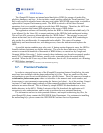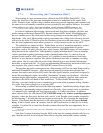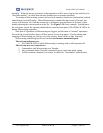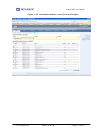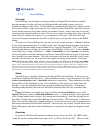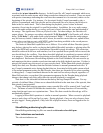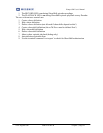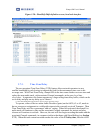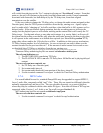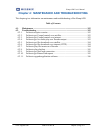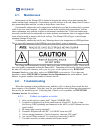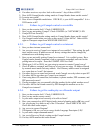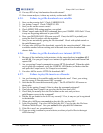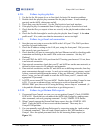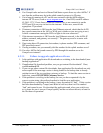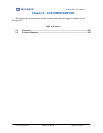
iPump 6420 User’s Manual
www.wegener.com 800070-01 Rev B Chapter 3, Page 100
will switch from playing out the “live” content to playing out “live delayed” content. From that
point on, the unit will continue to play audio from that stream and execute Compel commands
associated with that audio, but both delayed, by the TZ delay time, from their original
transmission over the satellite.
If the user wishes to change the TZ delay value, or change the audio stream assigned to that
Decoder (port), then the TZD system re-initializes from the top, starting over. Again, it plays
true live audio while “charging up” its buffer, and then, when that buffer is full, resumes on live
delayed audio. If the unit reboots during operation, then the recording process will note the
outage, but the playback process will resume working on the content that is still exactly the TZ
Delay in age. For that unit reboot, or any other such outages (e.g. carrier fades), an Event will
be written into the rolling event buffer, and, when the unit comes around to the time to play that,
it will operate in the same manner as a shifted show episode (see ShowShifting section 3.7.2),
using either silence and/or the LOA playlist as a filler. In addition to this recovery mechanism,
TZ Delay features another level of protection. At user-set intervals, an audit is done over the
content recorded for the previous interval.* If the amount of audio content lost exceeds a user-
set threshold, then TZ Delay re-initializes from the top, starting over.
* These intervals must divide evenly into a 24 hour day and should be set equal to or less than the TZ delay time.
Timezone Delay authorizing keyfiles are named serialnumber-tzdelay.pem.
The relevant indicators are:
1. The RECORD LED is on during TZ Delay
2. The PLAYBACK LED is on once TZ Delay has a full buffer and is playing delayed
content
The new relevant user controls are:
1. Set TZ Delay on a Decoder (port)
2. Set content audit interval
3. Set content audit threshold (some portion of the above interval)
4. Use the terminal command ‘cert report’ to check for TimeZone Delay authorization
3.7.4. MP3 Codec
For a small added license fee, standard iPump6420s may be upgraded to support MPEG 1,
Layer 3 audio files, commonly called “mp3” files. These files are treated no differently than the
normally-supported mp2 and wave files. They are playable discretely, or as part of playlists,
where they may be combined with the other audio file types. Note that all forms of ID3 tags are
supported, either Version 1, or 2, both, or no Tag at all (see spec Section 1.4).
MP3 authorizing keyfiles are named serialnumber-mp3.pem.
The new relevant user controls are:
1. Use the terminal command ‘cert report’ to check for mp3 authorization



